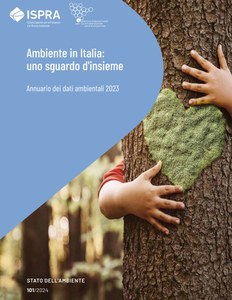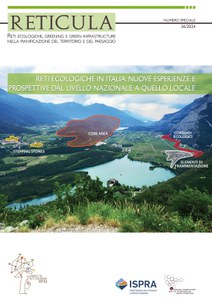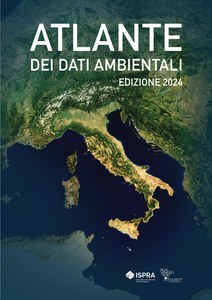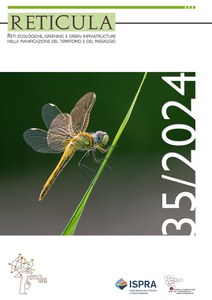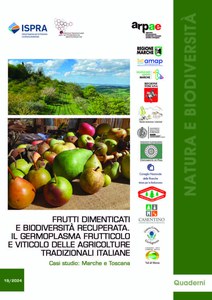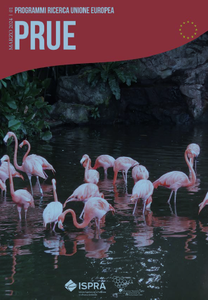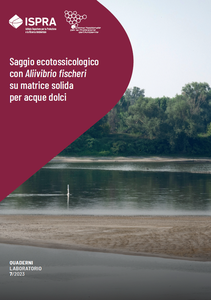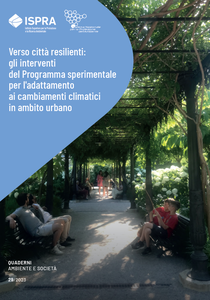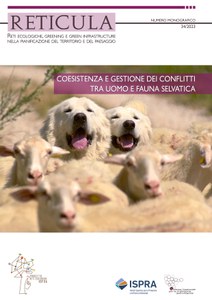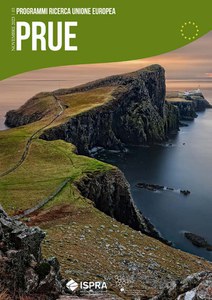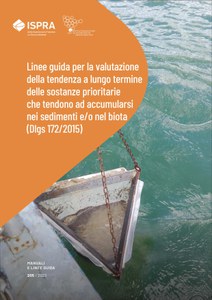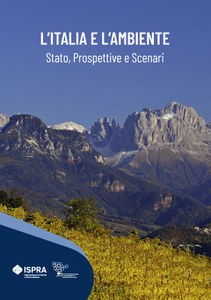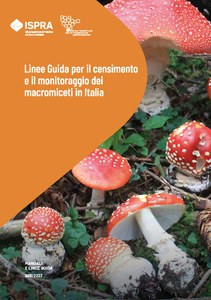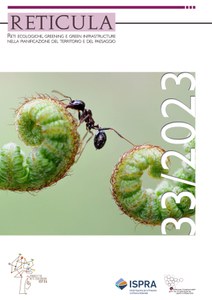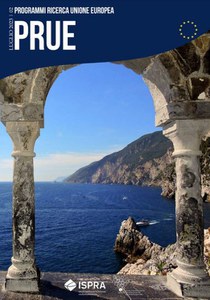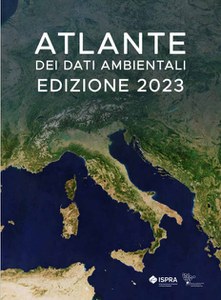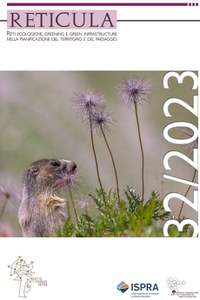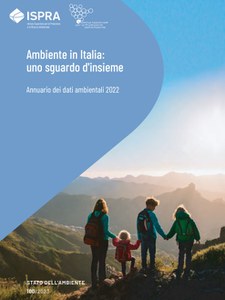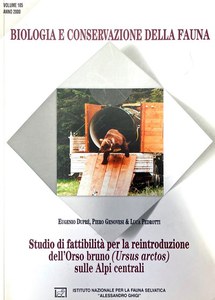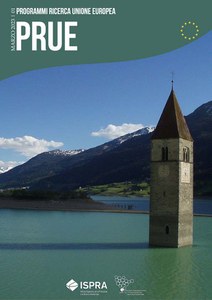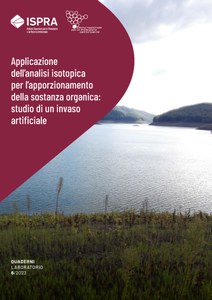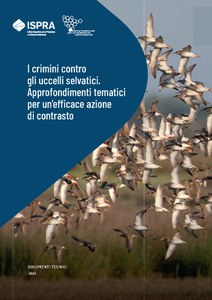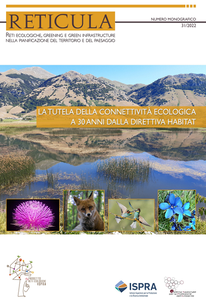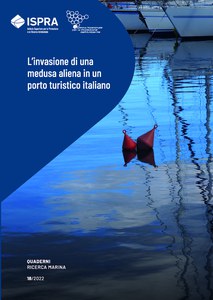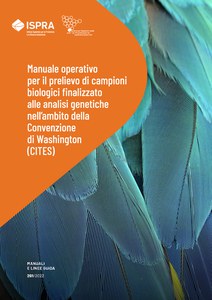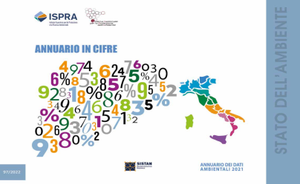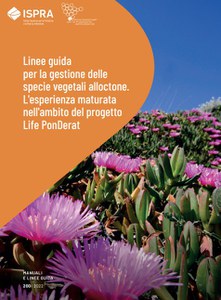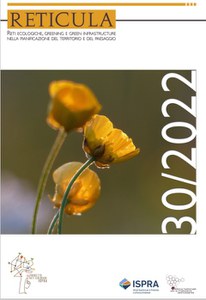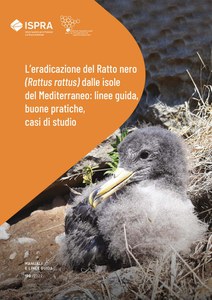Publications
Environment in Italy: an overview. Environmental Data Yearbook 2023
Environment in Italy: an overview. Environmental Data Yearbook 2023 is a statistical report produced by the Italian Institute for Environmental Protection and Research(ISPRA) in collaboration with the regional and autonomous province environmental protection agencies as part of the National System for Environmental Protection (SNPA).
Reticula n.36/2024
Atlas of Environmental Data. Edition 2024
The Atlas of environmental data, a volume that ISPRA publishes in this new edition, which offers an overview and a selection of the main environmental data in Italy. It provides cartographic representations that show the distribution of the main environmental information on the territory which, together with graphs, tables and texts, illustrate the situation of our country.
Reticula n.35/2024
Forgotten fruits and recovered biodiversity. The fruit and vine germoplasm of traditional Italian agriculture. Case studies: Marche and Tuscany
The volume, tenth and last in the series dedicated to the study of some of the Italian fruit varieties, deals with the case studies of Marche and Tuscany. For both regions, in the initial chapters, historical notes are provided relating to fruit growing, agricultural landscape, and the various initiatives aimed at the recovery, protection and valorisation of genetic resources still present in the form of fruit varieties that are rarely grown and at risk of disappearing.
Quaterly bulletin on a research funding
Directive against greenwashing. Parliament has given its final green light to a directive that will improve product labelling and ban the use of misleading environmental claims.
Operating procedure for the solid phase assay using Aliivibrio fischeri
This document describes the outcomes of a collaborative trial on ecotoxicological measurements in which laboratories belonging to public institutions (ISPRA, ARPA/APPA, Universities and other Research Institutes) and private subjects participated. This study led to the validation of a specific method for freshwater environments for conducting the solid-phase bioassay using the bacterium Aliivibrio fischeri.
Towards resilient cities: the interventions of the experimental Program for adaptation to climate change in urban areas
This Booklet offers an overview of the actions proposed by the Italian municipalities participating in the experimental program of interventions for adaptation to climate change in urban areas, launched in 2021 by the Ministry of Ecological Transition (now the Ministry for the Environment and Energy Security), in collaboration with ISPRA and ANCI.
Reticula n. 34/2023
Coexistence and management of human-wildlife conflicts
Bulletin on research funding
Commission adopts measures to limit intentionally added microplastics
Guidelines for the assessment of the long term trend analysis of the priority substances that tend to accumulate in sediment and/or biota
On MASE’s request ISPRA has elaborated a guideline in order to define criteria to assess long term trend analysis of those priority substances that tend to accumulate in sediment and/or biota.
ITALY and ENVIRONMENT: Status, Prospects and Scenarios
The new ISPRA report offers citizens, technicians, researchers, observers, and policy makers an accurate analysis of the state of the environment in Italy, considering the main European economic-environmental strategies (Green Deal, 8 th EAP).
Guidelines for the census and monitoring of macromycetes in Italy
These "Guidelines for the census and monitoring of macromycetes in Italy" are the result of the commitment and involvement of the many participants in the Open Science initiative of the Network for the study of mycological diversity (NMD).
Reticula n.33/2023
Bulletin on research funding
G7 Science and Technology for the ocean
Atlas of Environmental Data. 2023 edition
The Atlas of environmental data, a volume that ISPRA publishes for the first time, offers an overview of the main environmental data. It provides cartographic representations showing the spatial distribution of the main environmental information which, together with graphs, tables and texts, illustrate the state of the entire national territory.
Reticula n. 32/2023
Environment in Italy: an overview. Environmental Data Yearbook 2022
Environment in Italy: an overview. Environmental Data Yearbook 2022 is a statistical report produced by ISPRA with the aim of providing policy makers, public administrators, technicians and citizens with official information on the state of the environment in our country.
Feasibility study for the reintroduction of the brown bear (Ursus arctos) in the Central Alps
Bulletin on research funding
COP15: historical global deal for nature and people
Application of isotopic analysis for the proportioning of organic matter: study of an artificial reservoir
With the study of the stable isotopes of carbon and nitrogen it is possible to quantify the contribution to the total organic substance deriving either from the natural transformation of the biotic component or from anthropic sources such as, for example, urban and/or industrial waste. Recent research has demonstrated the effectiveness of such investigations in the identification and evaluation of contributions to organic matter deriving from multiple sources, in fact the stable isotopes of carbon and nitrogen show an isotopic composition characteristic of the source from which they originate.
Monitoring potentially toxic Ostreopsis cf. ovata along the italian coasts. Year 2021. Working Programme ISPRA/ARPA: Ostreopsis cf. ovata blooms along the italian coasts
The presence of the potentially toxic dinoflagellate Ostreopsis ovata (Fukuyo) has been observed along the Italian coast since the ‘90s. From then, intense and recurrent blooms of this seaweed alga occurred in several locations of the Tyrrhenian Sea and Adriatic Sea.
Crimes against wild birds. A thematic focus for an effective law enforcement
The purpose of this document is to contribute towards the implementation of the National Action Plan on Illegal Killing, Taking, and Trade of Wild Birds (IKB). Namely, Action 2.1.2 aims to “promote greater awareness among prosecutors and judges of wildlife crime, with particular reference to the various illegal practices and the repercussions they may have on the state of conservation of the ornithological species involved”.
RETICULA n. 31/2022 Monographic Number
The protection of ecological connectivity after 30 years of Habitats Directive
The invasion of an alien jellyfish in an Italian touristic port
Alien species are animal and plant organisms introduced accidentally or intentionally by humans outside their origin area. Maritime traffic is one of the species’ pathways of introduction, therefore, studying the alien populations that invaded port environments can help to fill the knowledge gaps on their invasion routes and impacts on local biodiversity and ecosystems.
Sampling manual of biological samples for genetic analyses on species concerning the Washington convention (CITES)
One of the main activities of the Conservation Genetic Department, in ISPRA, consists in enforcing the rules of the Convention on International Trade in Endangered Species of Wild Fauna and Flora (CITES) with the aim of identifying any illicit trades of endangered species. The genetic analyses are the basic stone in verifying whether specimens are legally owned by authorised breeders or if there are inconsistencies with the birth declarations and/or any suspected illegal collection of specimens from the wild. For these reasons, a correct biological sample collection protocol is pivotal in ensuring the reliability of the results and requires trained personnel.
The Yearbook in figures
Environmental Data Yearbook 2021
Guidelines for the management of non-native plant species
These guidelines present a collection of recommendations and best practices to be used for preventing and controlling the spread of some of the most common invasive plant species in Mediterranean islands and coastal areas. Along with operational guidance, they provide an overview of the basic concepts of plant invasion biology, regulatory references, and management techniques, to disseminate knowledge and share good practices.
Reticula n. 30/2022
Black rat (Rattus rattus) eradication from Mediterranean islands: guidelines, best practice, case studies
The Black rat (Rattus rattus) is one of the most globally widespread invasive species, having successfully colonized all continents thanks to human transportation. The species is known for its significant impact on human activities, public health and ecosystems, and it is included in the IUCN's list of the “100 of the World's Worst Invasive Alien Species”.

